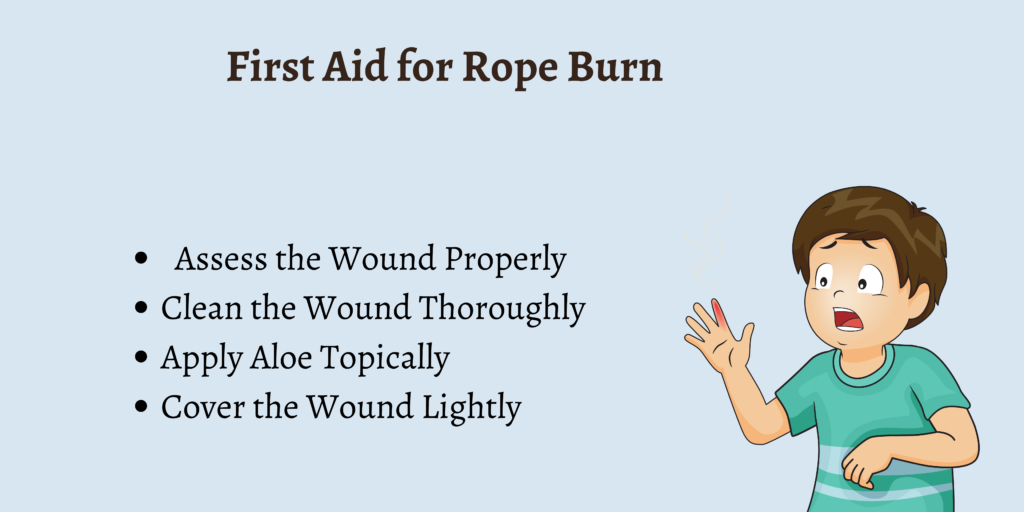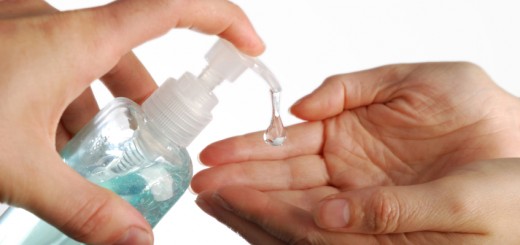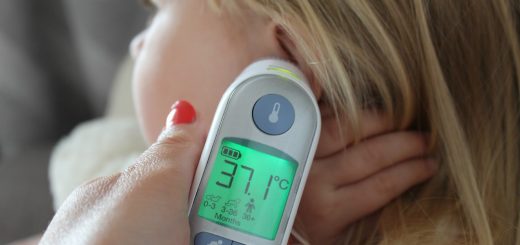First Aid for Rope Burn: 4 Effective Relief Tips
Do you remember playing tug of war as a child? Most of us indulged in this playful, often competitive activity every now and then.
However, did you know that this seemingly simple activity could cause rope burn? Well, it’s true, and since not many are aware of what it is or how to treat it, I thought it’s a topic I’d like to cover today.
A rope burn falls under the category of friction burns. Whenever a coarse rope moves repeatedly or rapidly against a person’s skin, it can lead to rope burn. This causes the skin to scrape, leading to signs such as:
- Bleeding
- Blisters
- Irritation
- Redness
Such types of burns are usually superficial, which means that they only affect the skin’s top layer. However, in certain less likely cases, they could penetrate deeper into your skin and expose your bones.
There are many activities that could lead to rope burns, including:
- Rock climbing
- Tug of war
- Boating or camping
- Handling farm animals
- Performing aerial acrobatics
Do you wonder how you can get relief from a friction burn? We are here to help you out with the answer. In this article, we will be discussing how to treat rope burns, what their aftercare looks like, how to prevent them, and what the recovery stage is all about.
First Aid for Rope Burn

In order to treat a rope burn, you will need the following supplies:
- Clean water
- Tweezer
- Aloe vera
- Cloth gauze tape
- Sterile gauze pads
Here are the steps to follow to get some relief after experiencing a rope burn:
1. Assess the Wound Properly
Check to see how severe the rope burn is. The depth and size of the rope burn can help determine whether it’s a first-, second-, third- — —, or fourth-degree burn. If the rope burn goes deeper than the uppermost layer of your skin or is bigger than two to three inches, get it checked by a doctor.
In case medical attention is required, clean and cover the wound so as to prevent infection, following which you should visit the nearest emergency facility or call the emergency medical services immediately.
Seek medical attention for the rope burn right away if you experience any of the following symptoms:
- Extreme pain
- Heavy bleeding
- Waxy and white appearance at the site of the wound
- Dehydration
- Exposure of bone or tissue
- Black and charred appearance at the wound site
- Rope fragments or dirt embedded within the wound that can’t possibly be removed easily
The burned area needs to be kept clean and covered so as to keep any infections at bay. Medical attention needs to be provided immediately if the wound gets infected. Here are the infection signs to watch out for:
- Swelling
- Fever
- Oozing
- Puffiness or redness that spreads from the site of the wound
- Pain that either keeps increasing or spreads further from the initial wound site
2. Clean the Wound Thoroughly
Clean the wound with cool running water. This aids in getting rid of the rope fragments, bacteria, and debris from the wound. In case running water is not available at that moment, you can use sterilized and standing water or a cool compress.
Make sure to not apply ice to the wound as it could damage the tissue further. There could be rope fragments that remain even after the wound is cleaned. You can either try to gently remove them yourself using a sterilized tweezer or wait till a doctor removes them for you.
Be sure to remain careful so that you don’t end up worsening the wound by pulling on it as you try to remove the debris or fragments.
3. Apply Aloe Topically
Apply aloe vera on the wound as it helps in easing the pain. Don’t use any other product, such as butter, as it could contain bacteria and infect the site of the wound.
4. Cover the Wound Lightly
Make use of a gauze bandage or wrap so that the wound remains clean and dry. Lightly wrap the wounded region and make sure it’s not tight.
Aftercare for Rope Burn
When you experience rope burn, it could hurt for a few days, and you can turn to over-the-counter pain medications to deal with the pain. Stick to the recommended dosage and visit a doctor if your pain increases or doesn’t get better within five days.
Listed below are some of the things to remember about the aftercare of a rope burn:
- Keep the bandage clean and dry. Change the bandage once every day or even more frequently if they get soiled or wet.
- Keep assessing the wound every now and then to look for signs of infection, puffiness, or redness.
- Every time you change the bandage, apply a layer of aloe on the wound without putting pressure on the site of the wound.
- If you see any blisters in the wound, do not pop them.
- Drink plenty of water and watch out for signs of dehydration.
- The wound doesn’t need to be covered anymore once it has completely healed.
When to Seek Help
Most of the rope burns are superficial and heal after being taken care of at home, without leaving any scars behind. Certain times, though, the rope burn could be severe and must be immediately cleaned and covered before the patient is taken to a doctor.
Seek medical help right away under any of the following conditions:
- The rope burn you have experienced is a second-degree burn, and you haven’t taken a tetanus shot in five years or more
- The wounded area has been infected.
- You’re experiencing immense pain.
- You are not able to clean out the burned area completely.
- The burn is very large or deep.
Recovering from Rope Burn
The time it takes to heal from a rope burn depends on its severity. First-degree burns usually heal between three to six days but could also take up to 10 days to heal completely.
Second-degree burns can heal anywhere between two to three weeks or longer. Certain cases could require skin grafting. Third- and fourth-degree burns take longer to heal and need skin grafting.
How to Prevent Rope Burn
If you believe your skin is going to come in contact with rope at any given time, remember to keep it covered using long-sleeved shirts, gloves, and long pants.
Certain preventative measures to follow to ensure you don’t suffer a rope burn are:
- When you’re on a boat deck, be careful that you don’t get entangled with the ropes.
- Make sure to wear gloves while playing tug of war.
- Be careful while walking around the ropes that are present in campgrounds and save yourself from stepping in rope loops.
- Unless it’s a life-threatening situation, don’t ever try to grab at a rope when it’s being pulled away from you by a vehicle, boat, or person.
- Remember to warn your children that ropes require to be handled safely and appropriately if they are about to engage in rope-based activities.
FAQs
Can you put Vaseline on rope burn?
Yes, Vaseline can often help in keeping a minor burn safe from infection.
Is aloe good for rope burn?
Yes, aloe helps in relieving the pain caused by rope burns.
How do you treat rope burn?
In order to treat a rope burn, the wound first needs to be assessed and cleaned, after which you should apply aloe on it and then keep it lightly covered.
Why is my rope burn itchy?
Some rope burns can feel itchy while you’re in the healing process.
Is Neosporin good for rope burn?
If your rope burn is minor, then you can apply Neosporin to it.
Conclusion
Most of the time, it’s possible to treat a rope burn at home. In certain cases, the victim requires the assistance of a doctor.
A rope burn should always be cleaned thoroughly and then covered using a sterile gauze bandage so that the wound site doesn’t get infected. Make sure to call your doctor if you experience any signs of infection.





